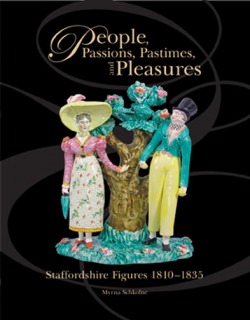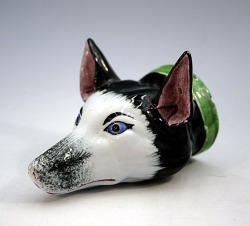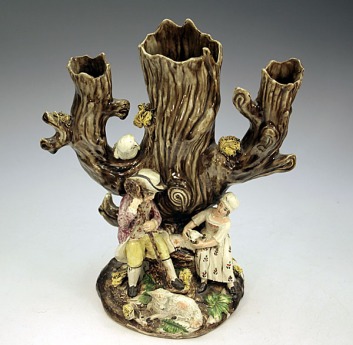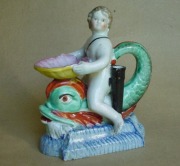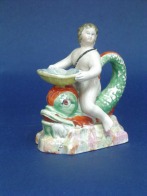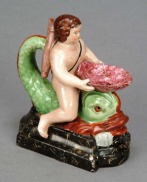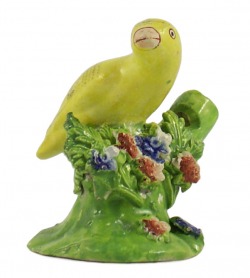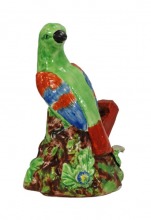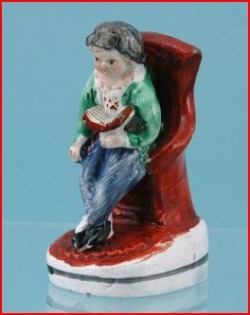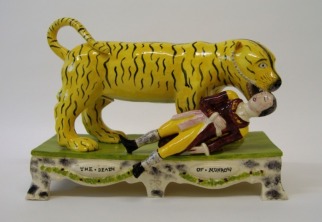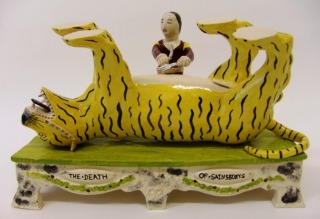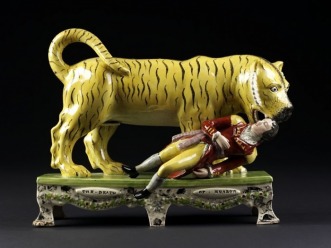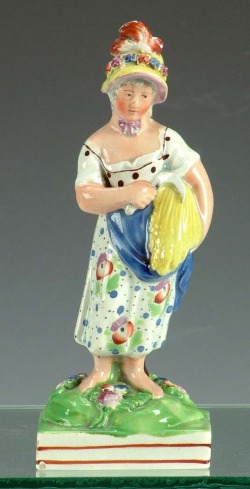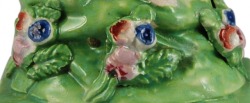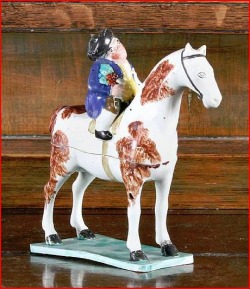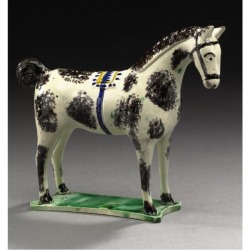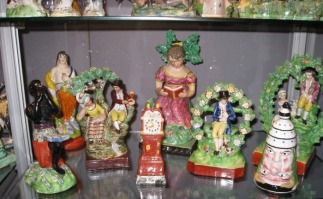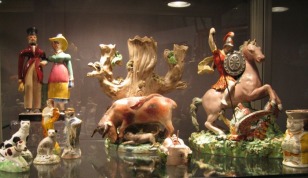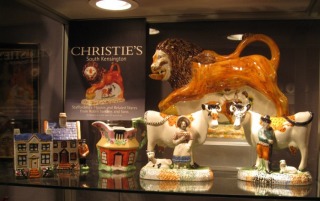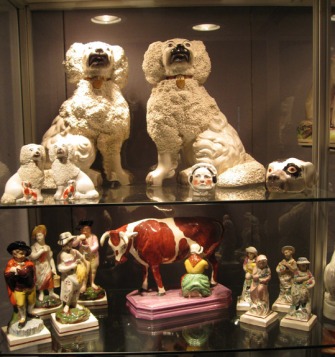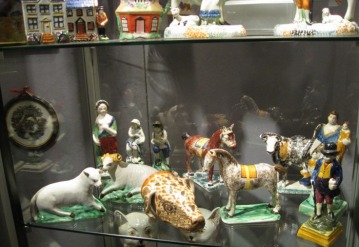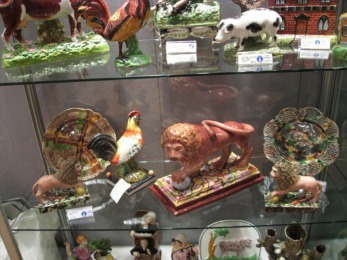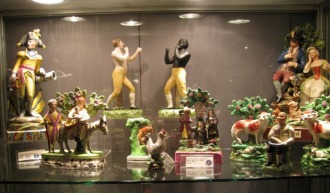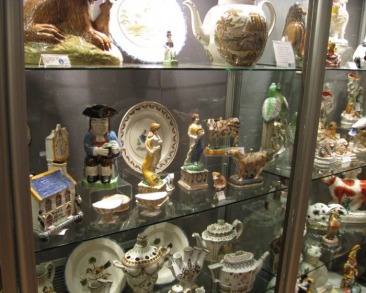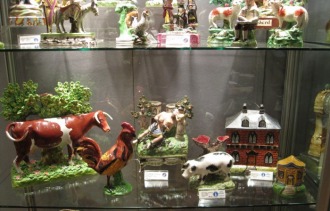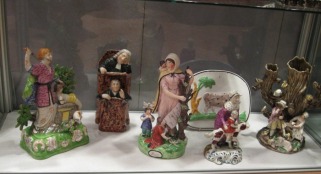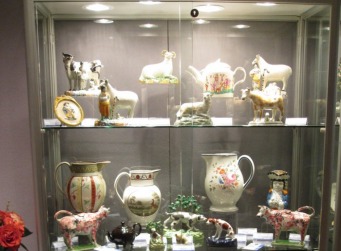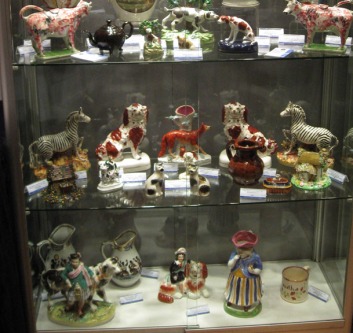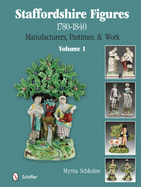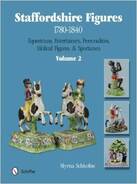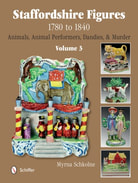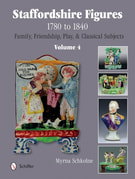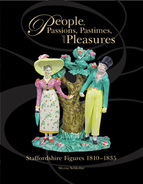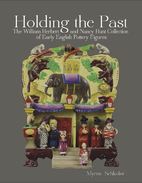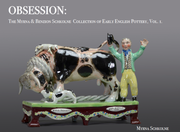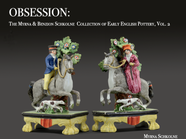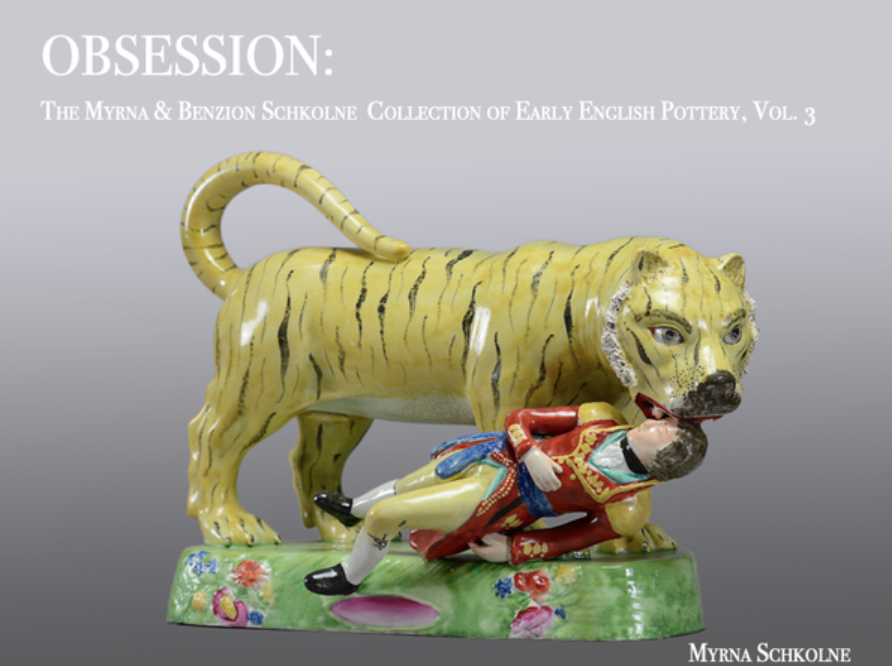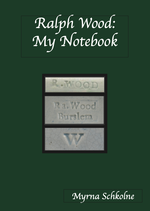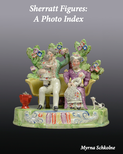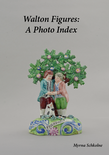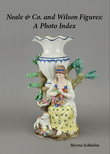|
Bloggers from far-flung countries who have postponed buying my book because the postage was too steep, I have good news. Postage is now FREE on books mailed to just about any country. Click on the BOOK tab at the top of this page if you want to order. Payment via the PayPal system allows you to charge the purchase to your PayPal funds or to a credit card of your choosing.
0 Comments
"So what is a stirrup cup?. I hope you don't mind me asking you." This question was posed to me by a lady as I sat sipping a drink in the little restaurant area of the New York Ceramics Fair. Stirrup cups were big at the fair this year. A handsome example adorned the cover of the fair catalog, and several dealers had lovely examples on display. This lady, who apparently pops into the fair each year and presumably buys on occasion, had looked at all the stirrup cups on display....and had been too intimidated to ask what purpose they served. A stirrup cup is usually shaped in the form of the head of a hare, a fox, or a dog. It was the "parting cup" given to departing guests, ready to leave with their feet in the stirrups. It was also the vehicle for serving a drink (usually sherry or port) served prior to a traditional foxhunt. So there it is in a nutshell. But the lady bothered me. Why had she hesitated to ask one of the very knowledgable dealers ? The bunch at the fair are particularly friendly and enthusiastic about their stock. Perhaps she had been rebuffed in the past. So get over it. I have had my share of put-downs....and now I just love it when someone tries. I have all the pat answers ready. Never hesitate to ask a question. It's the only way you will learn. Another factoid that not everyone knows is the purpose of a spill holder, sometimes called a spill vase Remember, these were the days before the invention of friction matches. So how did you light your candle? Well, you used a spill that was stored in a spill holder. A spill was a narrow roll of paper or strip of wood (rather like a chopstick). You set it alight from something that was already burning (another candle or the fireplace), and carried the flame over to whatever you needed to light next. When you were done, you might put your spill back in the spill holder, or toss it away. In any event, your supply of spills was always ready for use in one of the many spill holders you kept around the house.
While I am no Martha Stewart, I use my spill holders for more decorative purposes. I put fresh flowers in them. The flowers are placed in those little florists tubes that hold water. They can last for quite a few days...and they look so pretty when you entertain. Of course, if you want a place to store your chop sticks, you now know you should go out and buy a spill holder! You don't see this inkstand often. This example was formerly in the stock of Aurea Carter. The inkstand below appears similar, but I wonder why it lacks a quiver to serve as a quill holder. Was it made that way? Was the quiver broken off? This illustrates the importance of knowing what a figure should look like before committing to buy. What is NOT on the figure is often as important as what is. Then again, I have recorded another version of our putto--with a quiver on his back! Could be that all three versions of the figure are correct. Trouble is you don't know if you are buying from an unreliable source. Aurea's putto would have come with full details of restoration, if any....and that is the advantage of buying from a reputable dealer.
To complicate the issue further, I have seen two putto inkstands where the putto wears a hat. Yes, a hat. Isn't that what every putto needs? The head/face is from a different mold, best I can tell. One of these inkstands is in the Earle Collection (item 664 if you have the book.) The other is quite important because it has written beneath it "John Foster made this at Hanley August the 29 1820." Like the Earle putto, this fellow was made with hat and quiver (quiver now missing.) We know John Forster made one putto astride a dolphin on a summer's day in 1820--yet we know of not a single other item he made, and he must have made a fair number. Of course, I will always wonder if he made the look-alike figure in the Earle Collection. But who was John Forster and what else did he make??? Our figure potters were small operators. Sadly, the identities of many of these men has, like their fragile wares, vanished into the mists of time. A long time ago, I picked up this little bird whistle in London for a song. It was in the stock of a fine porcelain dealer, who didn't think too much of pottery, obviously. My husband didn't know why I was buying this diminutive object (it is just over 2" tall), but that didn't stop me. It has remained a much loved item in our collection--or at least I love it lots. Can you imagine how easily a small item like this whistle gets lost, broken, discarded over the centuries? It is no surprise that the years marched by without my seeing another. But at the New York Ceramics Fair this January, I was amazed to find its identical twin in the stock of James Labaugh Antiques. Yes, it cost a lot more than mine had, but it was worth it. A real little gem. I do have one other bird whistle, bought at the 2009 NYCF from John Howard. Charming isn't it? And the glaze and enamel colors are as brilliant today as they were two centuries ago. Amazing to think how much trouble once went into making a whistle, how much concern there was for its beauty. Today, a whistle is merely a utilitarian object, usually churned out on a production line in some distant country. Have we really progressed over time??
I will be traveling till Fri Feb 26. I have prepared Blog posting so I stay on schedule from afar....but answering questions with photos attached may be difficult. If it can wait, please email your questions after Feb 26. If it is urgent, go ahead and I will do my best to get back in touch. And yes, I expect to see Fabulous Figures on my travels.
I repeatedly comment on the pleasure of tiny figures. And I have often said that you can buy a perfect figure for a modest price. Have a look at the little reading boy that Andrew Dando has just put on his site. It fits the bill. Why haven't I bought it? Well, I would have...but I already have one just like it. Also, great news is that Stephen Smith is developing a fabulous site devoted to Sunderland lustre plaques. If these interest you--and they should, even if you are not a lustre collector you will find them fascinating--click here to visit.
The world is awash with reproductions, and I don't normally have anything positive to say about them, but these you will find interesting. In November, I got an email from Karen Thompson, a ceramics student at the Royal College of Art in London. Karen is studying for her MA and had a project requiring her to recreate a piece from the Victoria and Albert Museum's holdings. She chose that fabulous Staffordshire figure, 'The Death of Munrow'. Karen was struggling with the modelling because she had no images of the rear. I supplied some pictures...and recently the results popped into my email box. What a surprise! Karen had modeled 'The Death of Munrow' AND a response called 'The Death of Sainsburys', which is intended as a comment on Sainsbury's food chain and the predominance of supermarkets. I think Karen has done an extraordinary job of creating three dimensional objects from pictures. Most importantly, along the way she fell in love with Staffordshire figures. The Victoria and Albert Museum has a great 'Death of Munrow' in its holdings--pictured above. It was a gift from a well-intentioned donor. Most museum holdings are in reserve, which means the public never gets to see them. Please DON"T leave your Staffordshire figures to a museum. The odds are they will live in a dark room. They will never bask in the sunlight or be caressed by loving hands. I guess if the Victoria and Albert had its 'Death of Munrow' accessible, Karen would not have had to ask me to help with pictures. I am so pleased that I could help, because almost two centuries after its creation, my 'Death of Munrow' has inspired the love of Staffordshire figures in yet another potential collector.
Karen's work can be seen on her website by clicking here. This figure emblematic of the season of Summer is one of my favorites. The subject is quite mundane. Quite a few potters portrayed Summer thus. But what makes this figure special to me is the quality. Its excellence extends beyond its structural perfection. The enamels and glazes are simply beautiful. Bright and clear, but in no way harsh. The figure oozes charm. It is everything a Staffordshire figure should be. This figure is in the "Sherratt" style. We can attribute it to the "Sherratt" potbank by a variety of features. The dress pattern and two red lines on the base of the figure are typically of other "Sherratt" wares. But the clincher is the little floral garland that you can see on the center front of the base. In fact there are three such garlands on the base. These are akin to "Sherratt" signatures. I have yet to find them on a figure that does not present other "Sherratt" attributes. I am sure that Autumn, Winter, and Spring were made to go along with Summer, but as yet I have not found them. I live in hope!
It is not often that I see a figure form that I have never seen before. That's why I was excited to see this rare gem, now on Hiscock and Shepherd's site. Horses of this form are typically Pratt Ware and most are usually without a rider. Also, the horse is NOT usually formed in two parts, as is the case here. And I have never seen a topper astride a horse. The little fellow looks pleasantly inebriated. All in all, a charming, whimsical piece of work. As a reminder, here is the common-or-garden version of this horse. Hard to be certain from a picture, but I think that the base color on John Shepherd's horse is also Pratt, or underglaze. But the rest of the colors are enamel. If you want to know more, ask him yourself. Hiscock and Shepherd Antiques.
|
Archives
February 2024
All material on this website is protected by copyright law. You may link to this site from your site, but please contact Myrna if you wish to reproduce any of this material elsewhere. |
